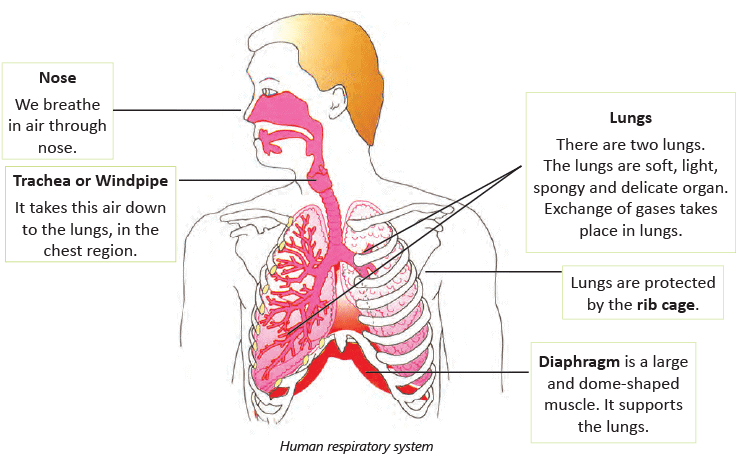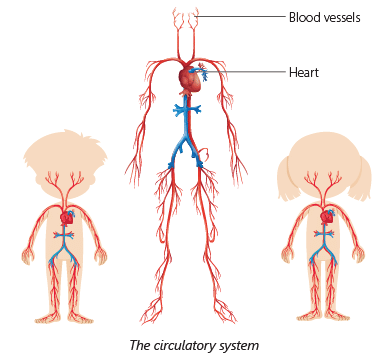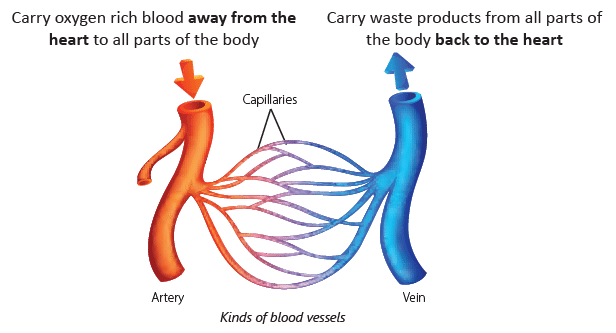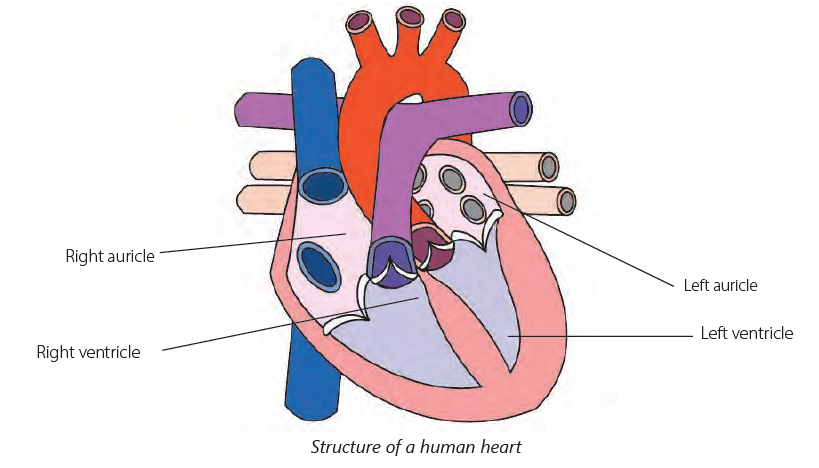Respiratory and Circulatory Systems Chapter Notes | Science for Class 4 PDF Download
The human body is a living, thinking machine made up of various organs. Multiple organs work together to perform a specific function, forming an organ system.
Respiratory System
To survive, humans need to breathe continuously. The respiratory system, which includes the nose, windpipe, and lungs, enables this process. Breathing involves inhaling air and exhaling it out of the body. This process occurs in two stages: inhalation and exhalation. Inhalation is when we draw air in, and exhalation is when we release air. As we inhale, the lungs fill with air, causing the chest to expand outward. During exhalation, air leaves the lungs, and the chest contracts inward. The air we inhale is rich in oxygen, while the air we exhale contains more carbon dioxide, germs, and some water vapor.

How Does Respiratory System Work?
When we inhale, the lungs fill with fresh air that is rich in oxygen. This oxygen is then transported to various parts of the body through the bloodstream. In exchange, the body releases carbon dioxide, which is carried back to the lungs via the blood. The lungs then expel this carbon dioxide when we exhale.
The Circulatory System
To remain alive, essential materials such as digested food, oxygen, and waste must be transported from one part of the body to another. This transportation is carried out by the circulatory system.
The circulatory system is made up of the blood, blood vessels, and the heart. Together, they regulate the flow of blood throughout the body, a process known as circulation.
Blood
Blood is a red fluid that circulates throughout the body in blood vessels. It serves as a medium for transporting various substances such as digested food, oxygen, carbon dioxide, and more across the body.
Blood Vessels
Blood flows through the body in tubes known as blood vessels. There are three types of blood vessels:
- Arteries are thick-walled blood vessels that carry oxygen-rich blood away from the heart to all parts of the body. This blood also contains nutrients from digested food.
- Veins are thin-walled blood vessels that carry oxygen-poor blood, containing carbon dioxide and other waste, back to the heart.
- Capillaries are small, narrow blood vessels with very thin walls. They allow nutrients, oxygen, carbon dioxide, and other waste products to pass through their walls.

The Heart
- The heart is a fist-sized organ located in your chest, protected by the rib cage.
- It beats around 72 times per minute throughout your life.
- Acting like a pump, it circulates blood through the blood vessels, producing the sound "lub-dub, lub-dub" as it sends blood to all parts of the body.
- The heart is divided into four chambers.
- The upper two chambers are called the auricles—the right auricle and the left auricle.
- The lower two chambers are known as the ventricles—the right ventricle and the left ventricle.

|
49 videos|156 docs|34 tests
|
FAQs on Respiratory and Circulatory Systems Chapter Notes - Science for Class 4
| 1. What is the main function of the respiratory system? |  |
| 2. How does the circulatory system work with the respiratory system? |  |
| 3. What organs are part of the respiratory system? |  |
| 4. What is the role of the heart in the circulatory system? |  |
| 5. Why is it important to have a healthy respiratory and circulatory system? |  |





















